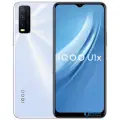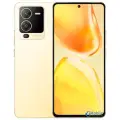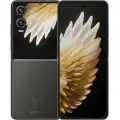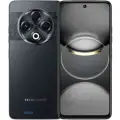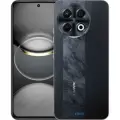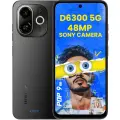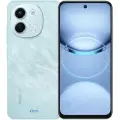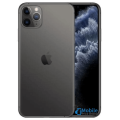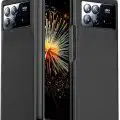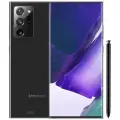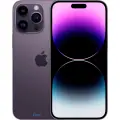Vivo V1



-
Released: 2015, July
-
OS: Android 5.0
-
Display: 5.0 inches, 68.9 cm2
-
Camera: 13 MP
-
RAM: 2 GB
-
Battery: 2300 mAh,
Full Specifications and Price in Bangladesh
General Info
| Announced | 2015, July |
| Status | Available |
| Brand | Vivo |
| Model | Vivo V1 |
| Color | White/Gold |
| Made by | India |
| Price | BDT. 17,990 |
Network
| Technology | GSM / HSPA / LTE |
| 2G Bands | GSM 850 / 900 / 1800 / 1900 - SIM 1 & SIM 2 |
| 3G Bands | HSDPA 850 / 900 / 1900 / 2100 |
| 4G Bands | LTE 850 / 900 / 1900 / 2100 / TD-LTE 2300 |
| 5G Bands | N/A |
| Speed | HSPA, LTE |
| GPRS GPRS (General Packet Radio Service) is a packet oriented mobile data service on the 2G and 3G cellular communication system's global system for mobile communications (GSM), Generally, GPRS is used for the purpose of wireless data transfer, such as sharing pictures and videos or browsing the Internet via a mobile phone connection. | |
| EDGE EDGE (Enhanced Data GSM Environment) is a wireless network technology generally considered the next step in the 2G network offers data transfer rates up to four times faster than ordinary GSM networks, Generally, EDGE is used for the purpose of wireless data transfer, such as sharing pictures and videos or browsing the Internet via a mobile phone connection. |
Body
| Dimensions | 143.3 x 71 x 6.8 mm (5.64 x 2.80 x 0.27 in) |
| Weight | 153 g (5.40 oz) |
| Build | Glass front, plastic back, plastic frame |
| SIM SIM (Subscriber Identity Module) is a small card that contains mobile network subscriber's account information. This allows the phone using the card to attach to a mobile network. The SIM card is most commonly associated with GSM and UMTS mobile networks. Moving a SIM card from one phone to another allows a subscriber to switch mobile phones without having to contact their mobile network carrier. SIM cards can also be used by a phone to store limited amounts of data, such as phone numbers and text messages. | Hybrid Dual SIM (Micro-SIM, dual stand-by) |
Display
| Type Design Type called form factor refers to a mobile phone's size, shape, and style as well as the layout and position of major components of phone. There are three major form factors seen in mobile phones => bar phones, folding phones and sliding phones. | IPS LCD |
| Size | 5.0 inches, 68.9 cm2 (~67.7% screen-to-body ratio) |
| Resolution | 720 x 1280 pixels, 16:9 ratio (~294 ppi density) |
| Refresh Rate | 60 Hz |
| Protection | Corning Gorilla Glass 3 |
| Pixel Density Pixel Density (PPI) is refers to the concentration of pixels on a particular display, measured in pixels per inch (ppi). Pixel density is calculated by dividing the diagonal pixel resolution of a display by its diagonal size, higher pixel density better display quality. | 294 ppi density |
| Multitouch | |
| Features | LED flash |
Platform
| Operating System OS => Every computer system run on a base software called Operating System (OS). Operating System controls all basic operations of the computer (such as smartphone, PDAs, tablet computers and other handheld devices). The Operating System allows the user to install and run third party applications (apps), apps are used to add new functionality to the device. | Android 5.0 (Lollipop), Funtouch 2.1 |
| Chipset Chipset is a group of integrated circuits designed to perform one or a more dedicated functions, often with real time computing constraints, Popular smartphones are equipped with more advanced embedded chipsets that can do many different tasks depending on their programming. | Qualcomm MSM8916 Snapdragon 410 (28 nm) |
| CPU CPU (Central Processing Unit) mostly known as processors, CPU processes instructions in order to carry out certain functions that make your device operate properly. Processors are often described as the brain of computers, smartphones and tablets, Smartphones and tablets rely on processors to carry out their every task, Processors are an incredibly important factor in selecting any type of computing device, including your smartphone. | Quad-core 1.2 GHz Cortex-A53 |
| GPU GPU (Graphics Processing Unit) is a single-chip processor designed to rapidly manipulate and alter memory to accelerate the creation of images in a frame buffer intended for output to a display, This includes things such as lighting effects, object transformations, and 3D motion. | Adreno 306 |
Memory
| Card Slot Memory Card Slot is a special slot for inserting a memory card. Memory cards allow you to expand the phone's built-in memory, A memory card (sometimes called a flash memory card or a storage card) is a small storage medium used to store data such as text, pictures, audio, and video, for use on small, portable or remote computing devices such as mobile phones, mp3 players, digital cameras. | microSDXC (uses shared SIM slot) |
| RAM RAM (Random Access Memory) is a type of computer memory that can be accessed randomly, any byte of memory can be accessed without touching the preceding bytes that allows information to be stored and accessed quickly from random locations. RAM is the most common type of memory found in computer systems, smartphones, tablets and other electronic devices. | 2GB |
| Internal Internal Storage is a data storage space (flash memory) mostly used in smartphones, tablets and other electronic devices where operating system, apps, music, photos, videos, files and other user data Is stored. | 16GB |
Main Camera
| Camera Resolution | 13 MP, AF |
| Camera Features | LED flash, HDR, panorama |
| Video Resolution | 1080p@30fps |
Selfie Camera
| Camera Resolution | 5 MP |
| Camera Features | LED flash, |
| Video Resolution | 1080p@30fps |
Sound
| Alert Types | Yes |
| Loudspeaker | Yes |
| Audio Jack |
Connectivity
| WLAN | Wi-Fi 802.11 a/b/g/n, Wi-Fi Direct, hotspot |
| Bluetooth Bluetooth is a wireless communications technology for exchanging data between mobile phones, headsets, computers and other network devices over short distances without wires, Bluetooth technology was primarily designed to support simple wireless networking of personal consumer devices. | 4.0, A2DP, EDR |
| GPS GPS The Global Positioning System is a satellite-based radio navigation system, GPS permits users to determine their position, velocity and the time 24 hours a day, in all weather, anywhere in the world, In order to locate your position, your device or GPS receiver must have a clear view of the sky. | Yes, with A-GPS |
| NFC NFC (Near field communication) is a set of standards for smartphones and similar devices to establish peer-to-peer radio communications with each other by touching them together or bringing them into proximity, usually no more than a few inches. | |
| Infrared port | |
| FM Radio | |
| USB | Micro USB 2.0, OTG |
Features
| Sensors Sensors are electronic components that detects and responds to some type of input from the physical environment. The specific input could be light, heat, motion, moisture, pressure and location, The output is generally a signal that is converted to use in computing systems, a location sensor, such as a GPS receiver is able to detect current location of your electronic device. | Accelerometer, proximity, compass |
| Messaging | SMS(threaded view), MMS, Email, Push Mail, IM |
| Browser Web Browser => a web browser is a software application used to locate, retrieve and display content on the World Wide Web, including Web pages, images, video and other files, The primary function of a web browser is to render HTML, the code used to design or markup webpages. | HTML5 |
| Java |
Battery
| Battery Type Battery Type => Cell phones run on various kinds of batteries depending on the manufacturer, phone size or shape and features. There are basically four types of cell phone batteries => Lithium Polymer, Lithium Ion, Nickel Metal Hydride and Nickel Cadmium. | Non-removable Li-Po Battery |
| Battery Capacity Battery Capacity is a measure (typically in Amp-hr) of the charge stored by the battery, and is determined by the mass of active material contained in the battery. The battery capacity represents the maximum amount of energy that can be extracted from the battery under certain conditions. | 2300 mAh, |
| Charging Wireless Charging (Inductive Charging) uses an electromagnetic field to transfer energy between two objects. This is usually done with a charging station. Energy is sent through an inductive coupling to an electrical device, which can then use that energy to charge batteries or run the device. | Fast charging |
| Fast Charging | |
| Wireless Charging |
Vivo V1:Overview:
The Vivo V1 is an entry-level smartphone designed for budget-conscious users who seek essential features in a stylish package. It features a 5.0-inch IPS LCD, a quad-core processor, and 2GB of RAM, providing decent performance for everyday tasks. The device also has a 13MP rear camera and a 5MP front camera, making it suitable for basic photography needs. Running on Android 5.0 (Lollipop) with Vivo’s Funtouch OS, the Vivo V1 delivers a user-friendly experience.
Price in Bangladesh
The Vivo V1 is available in Bangladesh at an approximate price of BDT 17,990.
Pro and Cons
Pros:
- Affordable Price: The Vivo V1 offers a good balance of features and performance at a budget-friendly price.
- Decent Camera: The 13MP rear camera and 5MP front camera provide satisfactory photo quality for casual photography.
- Compact Design: The 5.0-inch display and lightweight build make the device easy to handle and carry.
- Expandable Storage: The device supports microSD cards up to 128GB, allowing users to expand storage for their apps and media.
Cons:
- Outdated Software: Running on Android 5.0 (Lollipop), the Vivo V1 lacks modern software updates and security patches.
- Average Performance: The quad-core processor and 2GB RAM may struggle with demanding apps and multitasking.
- Limited Battery Capacity: The 2300 mAh battery might require frequent charging, especially for users who engage in heavy usage.
FAQs
- What is the internal storage capacity of the Vivo V1?
- The Vivo V1 comes with 16GB of internal storage, which can be expanded to 128GB using a microSD card.
- Does the Vivo V1 support 4G connectivity?
- The Vivo V1 supports 4G LTE connectivity for faster internet browsing.
- What is the battery capacity of the Vivo V1?
- The device is equipped with a 2300 mAh non-removable battery.
- Does the Vivo V1 have a fingerprint scanner?
- No, the Vivo V1 does not feature a fingerprint scanner.
- Is the Vivo V1 dual SIM?
- Yes, the device supports dual SIM functionality.
Reason to Buy
- Budget-Friendly: The Vivo V1 is an excellent option for those looking for an affordable smartphone without compromising essential features.
- Decent Camera Performance: The 13MP rear camera offers satisfactory photo quality, making it a good choice for casual photography.
- Compact and Lightweight: The 5.0-inch display and lightweight design make the Vivo V1 easy to handle, especially for users who prefer smaller smartphones.
- Expandable Storage: With support for microSD cards up to 128GB, the device offers ample space for media files, apps, and documents.
- 4G LTE Connectivity: The device supports 4G LTE, providing faster internet speeds for browsing and streaming.
This content provides:
- A concise yet comprehensive overview of the Vivo V1.
- Addressing its features, pricing, pros and cons.
- Reasons to consider buying it.
Videos
Vivo V1 review initial impressions, hands on
Disclaimer Note
We do not guarantee that the information of this page is 100% accurate and up to date.


